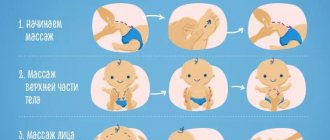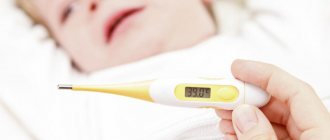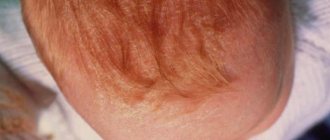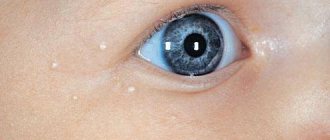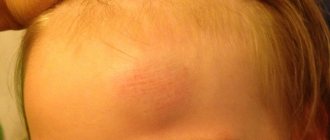Young children often experience split toenails. This phenomenon occurs due to a number of reasons that are associated with negative changes in the child’s body. Parents need to carefully look at the baby’s appearance; if there are any alarming changes, it is important to contact a pediatrician.
When a child’s nails on the lower extremities begin to peel off, most mothers and fathers try to eliminate the defect themselves. In some situations, getting rid of the problem at home helps. But it is better to consult with a specialist and find out the possible causes of separation of a child’s nail.
Why do baby's toenails peel?
Identifying the factors that can cause a child’s toenail to split is not a difficult task. It is necessary to tell the doctor about how the baby spent the last few days before the anomaly was discovered.
Everything is important: what the child ate, his sleep pattern, whether he was sick, etc. Various diseases, even the most harmless ones, as well as injuries become the cause of pathology.
Detachment of the baby’s toenail occurs under the influence of the following factors:
- Avitaminosis. A lack of important vitamins and microelements, especially calcium and zinc, leads to delamination of the nail plate. An experienced doctor will indicate what substances the child’s body lacks, based on the results of a urine and blood test of the baby. It is recommended to include foods rich in calcium, iron, and vitamin D in your child’s diet.
- Onychodystrophy. Peeling toenails may be caused by psoriasis. In such cases, small dimples form on the nail. If symptoms of psoriatic onychia are detected, it is important to promptly seek medical help.
- Blood discirculation. It is often the cause of nail splitting. If blood circulation is impaired, the damaged toenail on a child's toenail takes on a blue tint.
- Mechanical damage to fingers. Various bruises and injuries to children's fingers are a common cause of split nails. The damaged nail gradually changes in color (first turns blue, then turns black).
- Wearing uncomfortable, tight shoes. Leads to deformation of the nail plate on the child’s feet.
- Fungal infection. If the color of the baby’s nail turns yellow, and depressions begin to appear on the surface, then you should contact a mycologist. Such signs indicate a fungal infection, which can lead to peeling of the nails.
- Mental disorders. They appear when children experience stress and internal experiences. With nervous tension, the child sleeps poorly, refuses to eat, bites his nails, sucks his finger, etc. If you notice such changes in your offspring’s behavior, you should immediately visit your pediatrician.
- Incorrect care. The child’s nails must be carefully looked after and cut correctly using non-sharp scissors. It is important to maintain your baby’s personal hygiene, bathe him more often, and wash his hands.
- Metabolic disorder. Metabolic deterioration leads to various pathologies. Rickets, gastrointestinal diseases, anemia, and adrenal dysfunction indicate a lack of important microelements and impaired metabolism in the child’s body. Failures lead not only to the detachment of a child’s nail, but also cause a slowdown in the child’s development. Such children have poor memory, grow poorly, do not gain weight, and their limbs are constantly cold.
Other causes of nail rejection
Nails can fall off if a person has any dermatological diseases. These include contact dermatitis, psoriasis, eczema, ringworm and other ailments that can only be diagnosed and treated by qualified specialists. Another reason for rejection of the nail plates on the hands and feet can be vascular diseases, in which the blood supply to the extremities is disrupted. The list of pathologies that can lead to the problem under consideration also includes diseases of the thyroid gland, which provoke hormonal imbalance in the body. In the case where the cause of the rejection of the nail plates is any concomitant illness, the person needs to seriously engage in its treatment. If you don't do this, you shouldn't dream of healthy and beautiful nails.
The cause of onycholysis can be the incorrect use of household chemicals. Delamination and rejection of plates is often the result of direct contact of human skin with washing powder, dishwashing liquid, bath cleaners, construction mixtures, etc. To protect your nails and skin from the aggressive effects of chemical products, use them only with rubber gloves.
Representatives of the fair sex may have nails that split and fall off due to poor-quality manicure varnish. Inexpensive cosmetics for nails contain formaldehyde, a toxic substance that weakens the nail plate and contributes to its gradual rejection from the bed. Constant use of such products can lead to disastrous consequences, so before purchasing a varnish, a woman should be sure to familiarize herself with its composition. The right approach to choosing cosmetics for creating a manicure will allow her to maintain the health of her nails and never face the problem of their falling off.
Treatment

It is necessary to eliminate the problem of peeling nails on a child’s fingers after determining the root cause that led to such a flaw. The doctor prescribes medication if the defect is associated with diseases of the baby’s endocrine system. In the absence of serious pathologies, parents are recommended to use alternative methods designed to prevent the separation of children's nails (traditional medicine methods, a balanced diet, proper child care).
Antifungal medications
In cases where the cause of nail detachment is a fungal infection, it is necessary to take the baby to a mycologist. The specialist will determine what type of fungal parasites led to the pathology.
Wellness measures will drag on for a long time, and it will not be possible to get rid of the fungus “in a hurry.” Treatment is usually carried out over 3-4 months. At this time, parents need to disinfect the baby’s personal belongings (clothes, toys, shoes, crib).
Among other means of local therapy, Daktarin has proven itself to be excellent. The medicine is available in the form of an ointment, which should be used to treat the affected nail plates, or a gel, which is a means of oral use. Children under one year of age can be given antifungal medications based on miconazole (Mikozolon, Dactocin): the drugs do not have side effects.
Vitamin therapy
When the cause of delamination of the nail plate on a child’s foot is vitamin deficiency, the doctor will prescribe taking vitamins, among which Pikovit stands out.
The product will provide the baby with important microelements and substances beneficial to the developing body. "Pikovit" is characterized by its low cost and efficiency. The vitamin therapy complex can be supplemented with Multitabs and Pregnavit.
Balanced diet

In addition to taking vitamins, your child needs to start eating right. Multivitamin medications cannot fully provide your baby with all the microelements important for health. For this reason, most pediatricians recommend combining vitamin therapy and a special children's diet. It is advisable to include the following products in your diet:
- Broccoli, fresh cabbage.
- Cottage cheese, cheese, milk.
- Raisins, dried apricots.
- Porridges from various grains.
- Walnuts, hazelnuts, almonds.
Wrong shoes
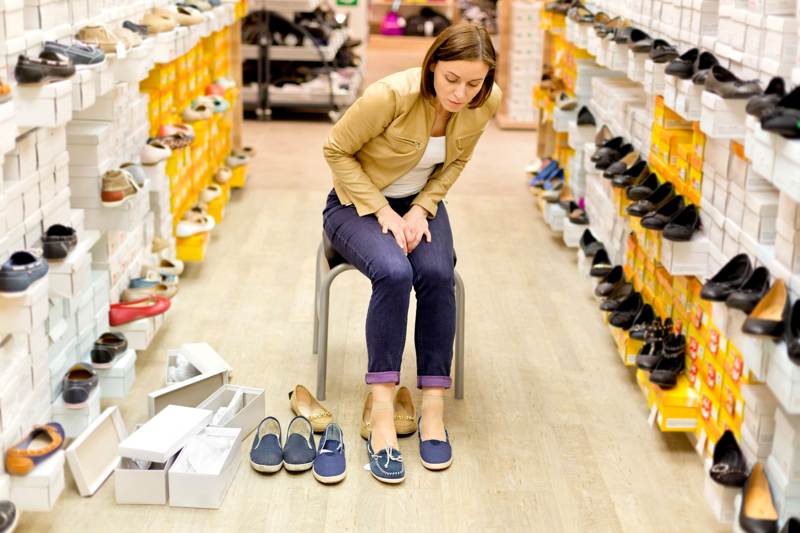
If the nail on the big toe begins to peel off for no apparent reason, a person needs to pay attention to his shoes. The culprits in the development of onycholysis on the feet are often tight shoes or shoes made of poor quality material. In a child, rejection of the nail plate on the foot can occur due to wearing tight shoes from which he has outgrown. This problem often arises among lovers of dress shoes with long toes. When wearing it frequently, the nails growing on the big toes suffer the most. Being in a compressed state for a long time, they become deformed and are forced out of their beds. This process is practically asymptomatic, without causing pain or any other discomfort to the person, so most people notice a problem with the nail after it has partially or completely peeled off, and it is not possible to save it. To put on open shoes, you need to wait until a new one grows in place of the fallen plate, and this process takes several weeks.
Falling toenails due to ill-fitting shoes is a common problem. A person who encounters it needs to stop wearing uncomfortable and low-quality shoes and boots. When choosing closed shoes, you should give preference to models made of genuine leather that do not squeeze the foot in the toes. If a child's toenail has peeled off and fallen off due to tight shoes, adults need to ensure that in the future he does not wear shoes that are too tight for him.
Ways to strengthen peeling children's nails
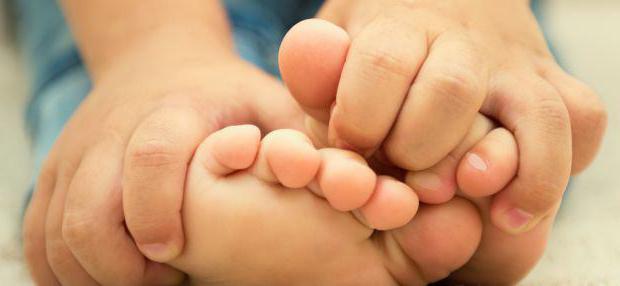
Having started to eliminate the defect, it is important to follow a number of preventive procedures aimed at the general strengthening of children's nails. Such events include:
- Lubricating nails with vitamins “A” and “E” in liquid form, which can be purchased at any pharmacy.
- Rub olive oil into damaged areas.
- Taking baths with sea salt (1 teaspoon), which together with iodine (3 drops) is added to a warm bath. It is necessary to bathe the child for 15 minutes, repeat the activity no more than once a week.
Parents need to wean their child from the habit of “biting nails.” For this purpose, you can smear children's nails with a special bitter varnish to discourage the baby from again wanting to put his fingers in his mouth. Avoid scandals in the presence of a child; the atmosphere in the family should be calm so as not to traumatize the child’s psyche.
The main causes of peeling nails
Finding the cause of peeling nails is quite simple. To do this, you need to remember everything that happened to the child over the past few days, namely:
- what illness he may have had;
- whether the child was injured;
- what kind of nutrition did the child have;
- what daily routine did the child follow?
Usually it is such trivial things that can cause nails to peel off. Therefore, if this disease occurs, parents are advised to look for probable causes.
Mechanical damage to nails. Since most children are quite active, they often injure their fingers. To begin the process of peeling off the nail, a small blow and bruise is enough. In such situations, nails change their color from healthy white to blue, purple or even black. Toenails are more likely to peel off because they are more often subject to deformation; for example, small and irregularly shaped shoes can rub the toes and cause damage to the nail plates.
Lack of vitamins or vitamin deficiency. If the nail begins to peel off from the base, then the reason for this can also be a lack of vitamins and minerals such as calcium, natural gelatin and iron. In this case, you may notice small white spots or a yellowish tint on the nails.
Fungal infection. Very often, a fungus can settle on the nails, which can cause nails to peel off. In such cases, you need to go to a dermatologist or mycologist, who will prescribe the necessary medications and tell you what to do with your nails. Mostly the toenails are also affected by the fungus. Please note that children's nail fungus is slightly different from that of an adult. In children, roughness may appear on the nail, and the nail itself may become very thick.
Mental disorders. Some children may have the bad habit of biting their fingernails when they are stressed. This habit can cause illness. Usually, along with it, the child also experiences poor sleep and worsening appetite.
The habit of biting nails can be one of the reasons for the development of split nails in a baby.
Other reasons. The causes of nail separation can also be improper functioning of the adrenal glands, metabolic disorders, and anemia. In such cases, you need to be further examined by a doctor who will prescribe a special course of treatment.
Once the cause of the nail peeling has been established, treatment can begin directly. First of all, it is necessary to eliminate the causes that caused this disease. Most of the reasons can, in principle, be eliminated on your own, but some require a trip to a specialist. If the exact cause is not established, it is recommended to undergo additional examinations and not begin self-medication.
What to do if nails peel while breastfeeding: problems with nails for mother and baby
Problems with the health and condition of nails after childbirth can arise for both mother and baby. It is important to correctly recognize the causes and understand why this happens, choose treatment and procedures. Let's look at what to do in the first and second cases.
If the nails of a nursing mother are peeling
Pregnancy and childbirth are not a reason to give up caring for beauty. Many mothers face the problem of splitting and deterioration in the appearance of their nails.
The reasons for this lie in the lack of vitamins, especially calcium. It is known that in the first six months after childbirth, a woman loses about 5% of this useful element.
But calcium during breastfeeding is necessary for the growth and strengthening of nails and bones, teeth and hair.
The mineral forms the bone skeleton and has a positive effect on the development of infants. Calcium will help the nursing mother’s body recover faster and return to its previous shape.
What to do if there is not enough calcium in the body?
First of all, the breastfeeding diet must include foods containing calcium. These are dairy products, which include cheese, cottage cheese, yogurt and milk.
However, be careful, as cow protein sometimes causes allergies in infants. In addition, sesame seeds, almonds, green vegetables, dried figs and beans contain calcium. These products are safe for nursing mothers and babies when consumed in moderation.
The daily calcium requirement for breastfeeding is 1.5 grams.
During lactation, you can take multivitamin complexes for nursing.
Calcium gluconate and Kalcemin, Elevit and Pregnavit, Alphabet Mom's Health and others will help compensate for the lack of vitamins and minerals.
However, before using any product, carefully read the instructions, study the composition and dosage, contraindications and side effects. It is advisable to consult a doctor.
Many mothers are interested in how to care for their nails after childbirth. Doctors do not recommend visiting nail salons, as it is easy to pick up infections and harmful bacteria there. Therefore, it is better to perform nail care procedures at home. Let's look at how to strengthen your nails at home.
Homemade nail care products for moms
- If you have weakened nails, protect your hands from exposure to aggressive factors. Use gloves when handling detergents, laundry detergents and bleaches;
- Use hypoallergenic protective and nourishing creams for the skin of your hands and nails;
- Lemon juice will help remove yellowness and strengthen your nails. Just rub them daily with a slice of lemon;
- An effective remedy is salt baths for hands using sea salt;
- Soda baths will also help. To prepare, simply pour one tablespoon of baking soda into a glass of warm water and mix thoroughly. Keep your fingers in the solution for several minutes;
- As a bath and massage oil for the hands, use a solution of olive oil, five drops of vitamin A and five drops of lemon juice;
- Don't forget about proper nutrition. The diet of a nursing mother should be varied, rich and nutritious. It should include vitamins A, B and E, calcium, silicon and iron. But remember that your food intake should be reasonable! Proper nutrition will not only restore beauty and health to the mother, but also improve lactation and ensure normal growth and development of the baby;
- Remember that manicure should not be harsh and aggressive! How to properly do a manicure while breastfeeding, read the link https://vskormi.ru/mama/mojno-li-krasit-nogti-pri-grudnom-vskarmlivanii/;
- Before doing a manicure, thoroughly disinfect each tool with hydrogen peroxide or alcohol;
- Toxic substances contained in nail polish and nail polish remover penetrate into the mother's blood and milk through the respiratory tract. To reduce the concentration of toxic substances, use a gauze bandage on your face and do not lean close to your nails during the procedure. You can only do a manicure in a well-ventilated area!
- Choose only high-quality varnish. It is important that the child is in another room during the procedure and does not inhale harmful fumes. The interval between painting and feeding should be 2-3 hours;
- If the varnish peels off, remove the coating immediately, as your baby may accidentally lick or swallow varnish particles!;
- Use nail polish remover without acetone.
If your baby's nails are peeling
It is important to monitor the baby’s condition, including external changes. After all, such changes may indicate various disorders in the functioning of the child’s body. You need to notice deviations in time and understand why this happened. And then, depending on the reason, take any action.
There are various reasons that explain why a child’s nails peel. These include:
- Mechanical damage and finger injuries. Even a slight bruise or blow can lead to deterioration of the condition of the nails. In this case, the color of the nail changes, becoming blue, purple, and sometimes even black;
- Toenails often become split due to uncomfortable and tight shoes that rub;
- Lack of minerals and vitamins, especially calcium and iron, leads to deformed nails. Due to vitamin deficiency, the nail begins to split at the base, often changes color and becomes yellow, sometimes covered with white spots;
- A fungal infection is an alarm bell for mom and dad. The infection usually affects the toenails. The surface of the nails peels off heavily and becomes rough, sometimes thickening. If you find a fungus in your baby, consult a doctor immediately!
- The baby constantly sucks his fingers or bites his nails. The reasons for this behavior lie in stress, internal experiences and even mental disorders. In this situation, bad habits are often accompanied by sleep disturbances and insomnia, restless behavior and loss of appetite;
- Impaired metabolism, anemia and disorders of the adrenal glands can also cause dissection. In case of such problems, it is necessary to undergo a medical examination.
When you find out why your baby’s nails are splitting, you can begin treatment. First of all, you need to eliminate the reasons that led to this problem. Some can be dealt with at home. However, if you are in doubt about the cause or if the defect is serious, contact a specialist! Self-medication will only worsen the situation and lead to new diseases.
How to help a baby
If a vitamin deficiency is detected in a child, special children's multivitamin complexes are prescribed. For example, Pikovit or Prengavit. Children are often prescribed nail treatment with oils containing vitamins A and E, as well as medicinal baths with warm vegetable oil, lemon juice and iodine.
It is important to monitor your baby's nutrition. The diet should include foods rich in calcium and iron. These are broccoli, green apples, dairy products. If the baby has not yet switched to complementary foods, these products should be included in the mother’s menu.
If fungus is detected, be sure to contact a specialist. He will select the right treatment, the course of which is 2-4 months, depending on the stage of the disease. At this time, it is important to disinfect and iron the child’s things with a hot iron to avoid spreading the fungus and infecting other family members.
data-matched-content-rows-num=”9, 3″ data-matched-content-columns-num=”1, 2″ data-matched-content-ui-type=”image_stacked”
Source: https://vskormi.ru/mama/sloyatsya-nogti-u-mami-i-grudnichka/

